Hornwort (Coontail) For Betta Fish Tank, Is It Good?
Explore the benefits of hornwort (coontail) for betta fish in our latest blog post.
Learn how this versatile aquatic plant enhances your betta’s environment, promotes healthy water conditions, and provides essential hiding spots. Discover tips for integrating hornwort into your betta fish tank for a thriving aquatic habitat.
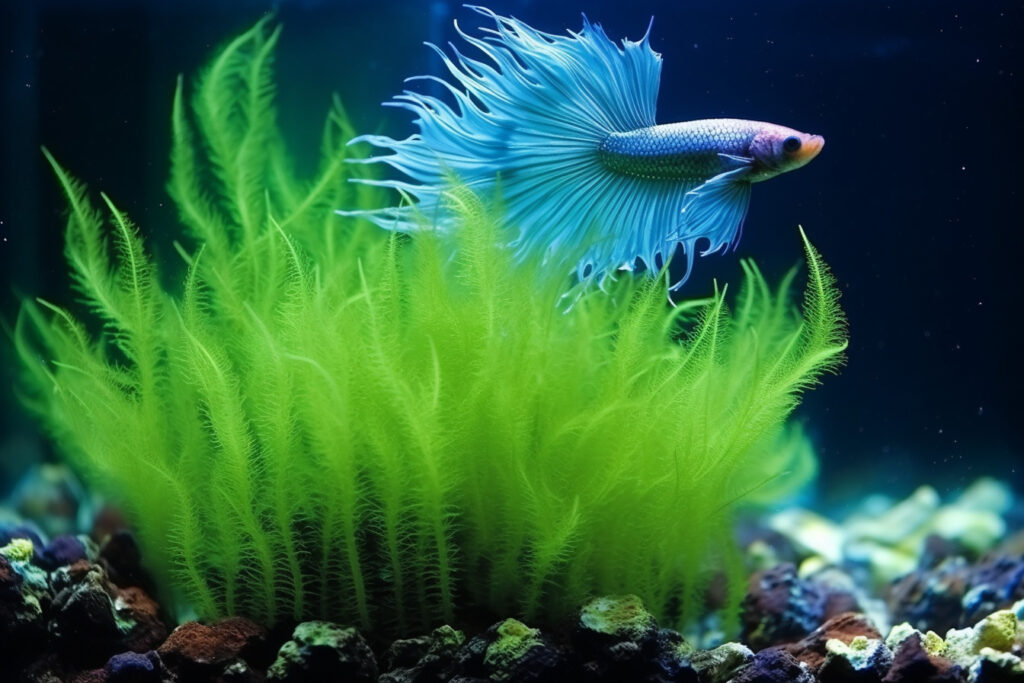
The Hornwort is a plant shrouded in both greenery and mystery. Known also by the alluring name of Coontail or scientifically, “Ceratophyllum demersum.”
It sways gracefully in aquarium currents, whispering secrets only your betta fish might understand.
But the question that has baffled aquarists and betta enthusiasts alike is this: “Is Hornwort (Coontail) Good For A Betta Fish Tank ?”
Dive into the depths of this blog post and by the end you’ll not only know why Hornwort is a must-have for anyone in the aquarium hobby, but you’ll also learn how to make it a key player in your betta tank setup. So, let’s plunge right in!
Table of Contents 🦑
The Benefits of Hornwort in a Betta Fish Tank
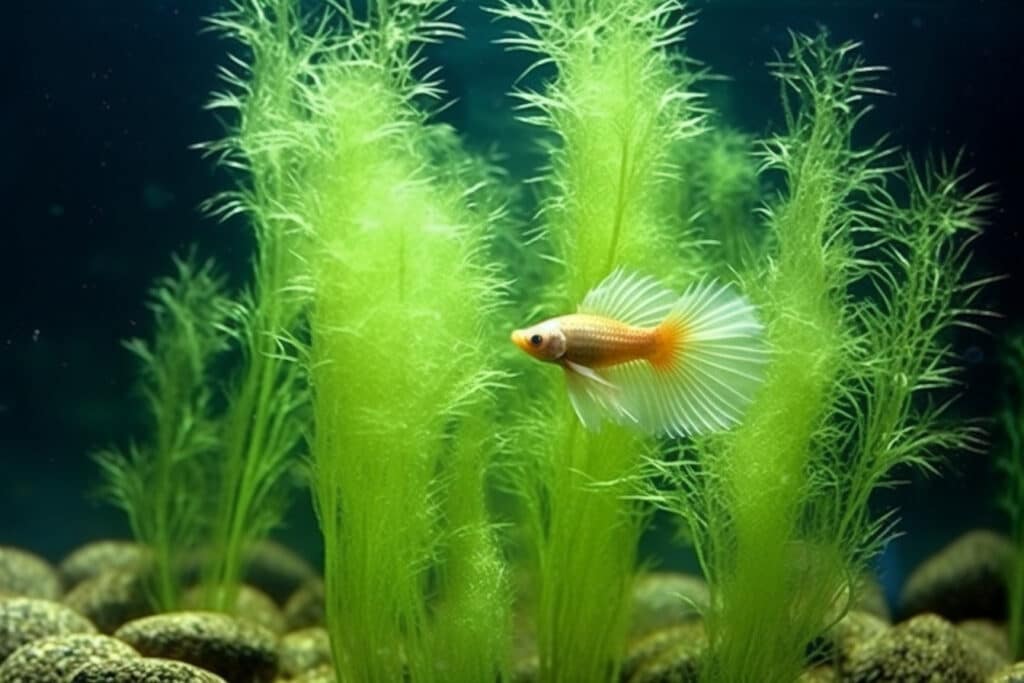
Alright, folks, let’s get into the good stuff. Why Hornwort is a popular freshwater aquatic plant companion for your betta fish? Let’s count the reasons:
A Natural Hideout
Your betta needs its me-time, too! The dense foliage of Ceratophyllum demersum provides excellent cover, making it a perfect hiding spot for your betta when it needs a break from the limelight.
Enrichment Galore!
When your betta isn’t busy showing off its gorgeous colors, it’ll appreciate having something to explore. The intricate branches of Hornwort are like an underwater playground that will keep your betta entertained.
Water Quality MVP
Hornwort is more than just a pretty face. This popular aquarium plant is a natural filter, helping to remove toxins like ammonia and nitrates from the water column. Your betta will thank you for the improved living conditions!
Aesthetically Pleasing
With its vibrant green color and interesting shape, Hornwort adds a dash of natural beauty to any aquarium. Trust us, your betta tank will be the talk of the town—or at least your living room.
So, as you can see, Hornwort isn’t just another underwater plant, it’s an essential component of a happy, healthy betta habitat.
Ideal Water Parameters for Hornwort and Betta Fish in Aquariums
When setting up an aquarium, it’s crucial to consider the specific needs of both the plants and animals you intend to keep.
The table below provides a detailed comparison of the ideal water parameters for the Hornwort aquarium plant, and Betta Fish.
Understanding and maintaining these parameters is key to ensuring a healthy environment where both can thrive.
Hornwort not only adds aesthetic value to your aquarium but also plays a significant role in water purification, making it an excellent companion for Betta Fish.
This aims to help aquarium enthusiasts balance the needs of Hornwort and Betta Fish, promoting a harmonious and thriving aquatic ecosystem.
| Parameter | Hornwort Ideal Range | Betta Fish Ideal Range | Notes |
|---|---|---|---|
| Temperature | 59°F to 86°F (15°C to 30°C) | 78°F to 80°F (25.5°C to 26.7°C) | Hornwort has a wider temperature tolerance than Betta Fish. |
| pH Level | 6.0 to 7.5 | 6.5 to 7.5 | Both thrive in slightly acidic to neutral pH levels. |
| Hardness (GH) | 5-15 dGH (89-268 ppm) | 3-4 dGH (50-66.7 ppm) | Hornwort can tolerate a broader range of water hardness. |
| Carbonate Hardness (KH) | 4-8 dKH (71-143 ppm) | 3-5 dKH (53.6-89.4 ppm) | Both require moderate KH for stability, but Hornwort can tolerate a slightly wider range. |
| Light | Low to High | Not Applicable | Light requirements are critical for Hornwort, not for Betta Fish. |
| Nutrients | Moderate to High | Not Applicable | Hornwort benefits from nutrient-rich environments; less relevant for Betta Fish. |
| Ammonia | Not Specified | 0 ppm | Ammonia should be non-detectable for Betta Fish health. |
| Nitrite | Not Specified | 0 ppm | Nitrite levels should also be non-existent for Betta Fish. |
| Nitrate | Not Specified | Below 20 ppm | Betta Fish require lower nitrate levels; Hornwort can help absorb nitrates. |
How to Choose the Right Hornwort for Betta Fish
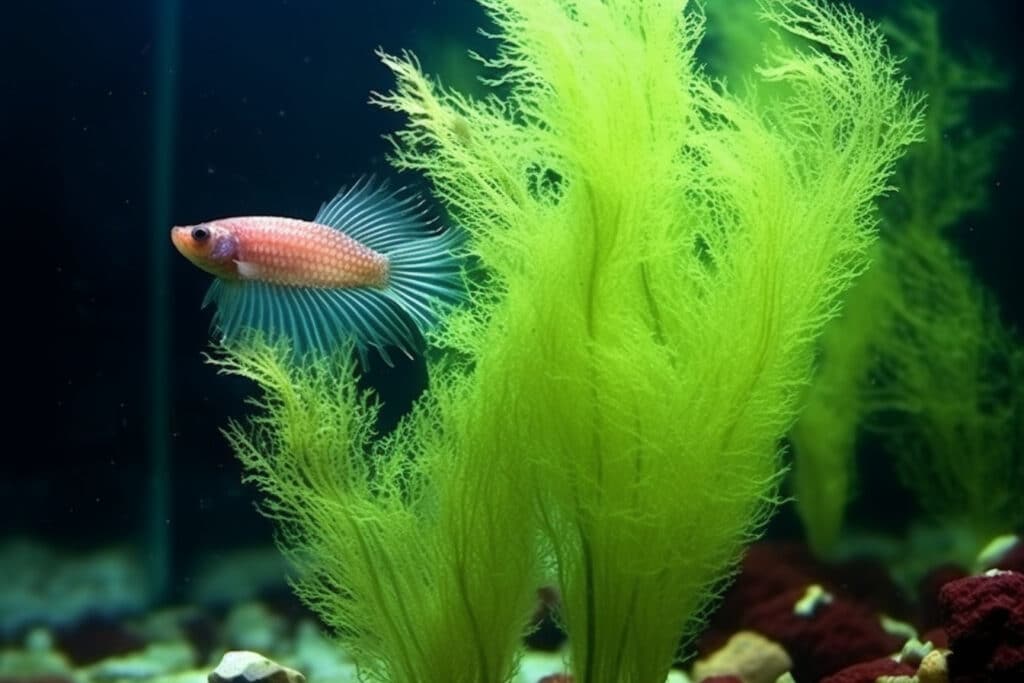
Picking out the perfect Hornwort isn’t just about aesthetics, it’s about creating a happier, healthier environment for your betta. Here’s how you can ensure that you’re choosing the best Coontail for your betta fish’s forever home.
Size Matters in a Betta Tank
In the world of betta fish tanks, one size definitely doesn’t fit all. If you have a small or nano tank specifically for your betta, you’ll want a Hornwort that fits the space without overpowering it. Remember, your betta needs room to explore and strut its fins!
Fresh, Healthy, and Betta-Friendly
Choose a Hornwort with a lush green hue and full, sturdy branches. Yellow or broken branches are usually a sign that the hornwort plant plant isn’t in peak health and may not provide the optimal benefits for your betta fish.
No Unwanted Guests, Please
Before adding any hornwort plant to your betta fish tank, make sure to inspect it for pests or algae. The last thing you’d want is to bring in an unwanted visitor that could disrupt your carefully balanced aquatic ecosystem.
Betta Expert Advice
When in doubt, consult those who know best. This could be your fellow betta-keeping friends or experts at your local pet store. It’s always a good idea to get a second opinion to ensure you’re making the best choice for your finned friend.
You’re now equipped with the wisdom to choose the Hornwort that will make your betta fish’s Care Sheet
Planting and Positioning Your Coontail
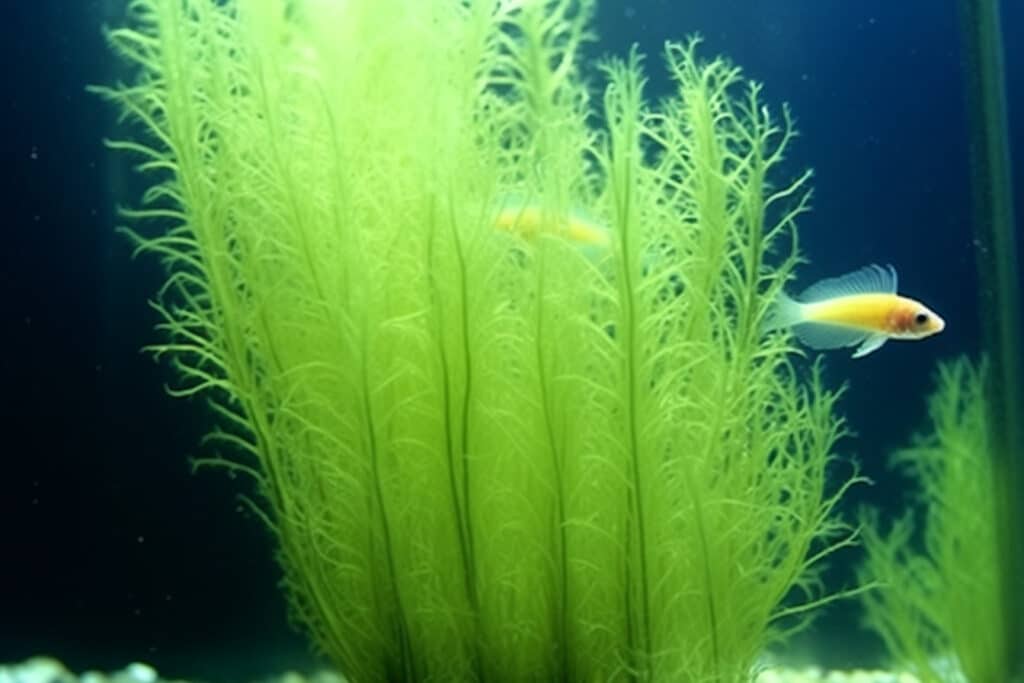
You’ve picked the perfect Hornwort—kudos! Now, it’s time to introduce your leafy companion to its new underwater home. Setting the stage right is crucial for both the plant’s growth and your betta’s happiness. So, let’s get planting!
A Proper Introduction
When you bring your Hornwort home, give it a little spa day. Rinse it gently under cool, running water to remove any loose debris, pests, or hitchhiking algae. Then, place it in a quarantine tank for a day or two if possible. This step minimizes the risk of introducing anything unwanted into your main tank.
To Anchor or Not to Anchor?
Hornwort can be a free floating plant or can be anchored to the substrate. For betta fish, either option works like a charm. If you opt for anchoring, gently push the bottom stems into the substrate, taking care not to damage the delicate leaves. Floating Hornwort creates a canopy at the top, offering your betta a shaded spot to chill.
Positioning for the Win
The ideal position for Hornwort largely depends on your tank setup. If you have a sparse layout, you can place it as a midground plant to add depth and interest. For a fuller setup, using it as a background plant creates a curtain of green, leaving the center stage open for other stars of the tank.
Maximizing Benefits
Wherever you place it, keep in mind that Hornwort is a nutrient sponge. Position it near areas where you notice excess waste or near the filter output for maximum nutrient absorption. This aids in keeping the water column quality pristine, which your betta will surely appreciate.
Monitor Your Ceratophyllum Demersum
It’s always a good idea to monitor any new additions to your aquarium to ensure they are not negatively affecting your fish. Each betta has its own personality and comfort level with its surroundings. Some may love the extra foliage to swim through and hide in, while others may not take to the new addition as well.
There you have it! Now you know the nitty-gritty of adding Hornwort to your betta’s watery world. Properly introduced and correctly positioned, this hardy plant will not only beautify your aquarium but also make it a healthier, happier place for your betta to live.
Common Mistakes to Avoid
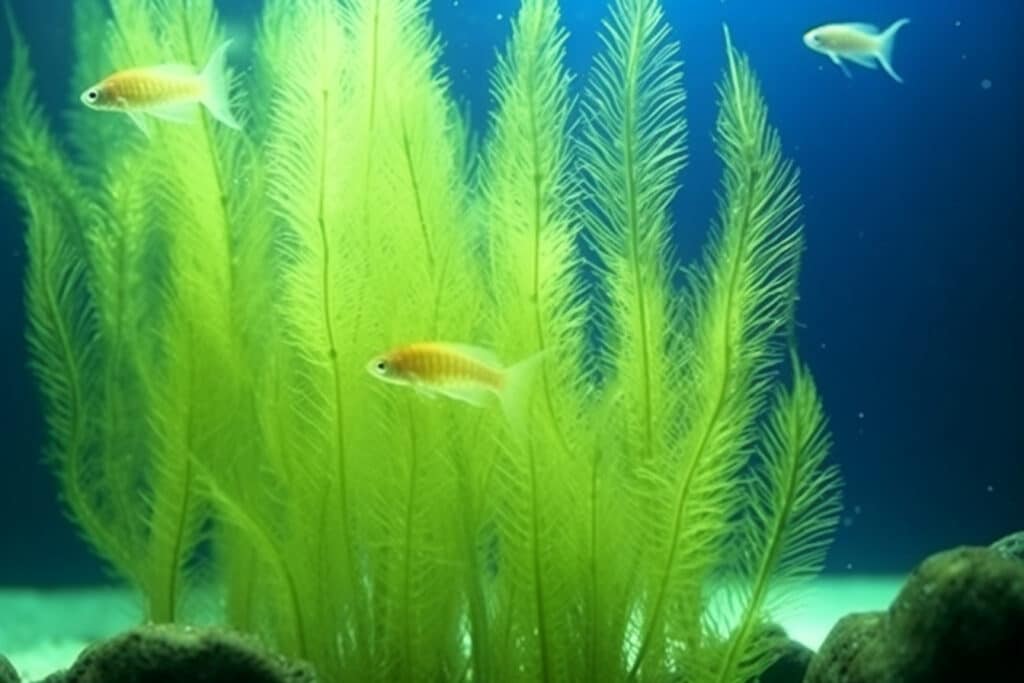
Alright, we’re in the home stretch! As with anything in life, mistakes happen, and it’s no different when it comes to adding Hornwort to your betta tank. Let’s breeze through some common pitfalls and how to sidestep them like a pro.
Overcrowding the Tank
While Hornwort is an awesome addition, remember that less is often more. Overcrowding your tank with too much of it can limit swimming space and may even affect water quality. Give your betta room to roam!
Ignoring Light Requirements
Hornwort loves light, but not too much of it. About 8 to 12 hours of moderate light is perfect. Ignoring this can lead to poor hornwort plant health and less effective nutrient absorption, which ultimately could affect your betta.
Forgetting to Prune
Your Hornwort can grow faster than you can say “betta fish!” To keep it in tip-top shape, regular pruning is essential. Neglecting this step could lead to the hornwort plant overtaking your tank and messing with the delicate ecosystem balance.
Neglecting Water Quality
Even though Hornwort is low maintenance, don’t get complacent about water parameters. Keeping a regular check ensures a harmonious relationship between the plant and your betta.
Misplacing Your Plant
Location, location, location! As we’ve discussed, positioning your Hornworts strategically makes all the difference for both aesthetics and functionality. Don’t just toss it in and hope for the best; plan its placement carefully.
So there you have it, folks! These common mistakes are super easy to avoid when you know what to watch out for. Your betta and your Hornwort will thank you for your diligence.
Coontail Propagation Tips
Ah, propagation—the miracle of life for the aquatic plant world! If you’ve been marveling at your Coontail and think it’s time to spread the green love, you’re in luck. This flowering plant makes it so easy to propagate that even a baby fish could almost do it. Okay, not really, but you get the idea.
Produce Seeds: A Rare Occasion
While Hornwort does have the ability to flower and produce seeds, it rarely does so in an aquarium setting. But hey, if you happen to be one of the lucky ones to witness this magical event, treasure it. It’s like winning the “Plant Lotto.”
A New Plant from Cuttings: The Easy Plant Way!
More commonly, Hornworts propagates through cuttings, proving once again that it’s an easy plant to work with. All you need to do is snip a healthy stem that’s at least a couple of inches long. Then, anchor the cutting in the substrate or let it float freely. Before you know it, roots will form and a new plant will start to take shape.
The Importance of Healthy Parent AquariuPlants
Propagation success largely depends on the health of the parent plant. Since Hornwort is so hardy, it usually provides robust cuttings. However, keep an eye out for any signs of stress or disease in the parent plant to ensure your new plant gets a good start.
With these propagation tips, your Hornwort collection can become the lush, green underwater forest you’ve always dreamed of. It doesn’t hurt to try—after all, the more, the merrier!
FAQs All Your Hornwort Queries Answered
Whoa, we’ve covered a lot, haven’t we? But hey, we get it—when it comes to your betta’s well-being, there are no stupid questions! So let’s dive into some Frequently Asked Questions that might be buzzing around your brain.
Q: Can Ceratophyllum Demersumsurvive without a substrate?
A: Absolutely! One of the best things about Hornwort is its adaptability. It can float or be anchored. However, it doesn’t root in the traditional sense, so it doesn’t need substrate to grow
Q: Is Hornwort safe for my betta's delicate fins?
A: Yep, you betcha! Hornwort is known for its softer, feathery foliage, which is easy on your betta’s beautiful fins.
Q: How fast does Hornwort grow?
A: Hold onto your fish nets, because this plant is a rapid grower! In optimal conditions, it can grow up to an inch per week.
Q: Does Hornwort help combat algae?
A: Indeed, it does! By absorbing a lot of nutrients, Hornwort can outcompete algae for resources, making it an algae-buster in your tank.
Q: Can I propagate Hornwort easily?
A: You certainly can. Just snip off a healthy section, ensure it has some leaves, and either let it float or anchor it down. Voila! New aquarium plants.
Q: Is Hornwort a good option for a beginner aquarist?
A: Hornwort is forgiving and robust, making it an excellent choice for both newbies and seasoned aquarium hobbyists.
We hope this FAQ section clears up any lingering doubts or questions you might have. If not, feel free to hit us up in the comments!
Conclusion
So there we have it, the complete guide to Hornwort for your betta fish. From its lush, feathery foliage to its powerhouse benefits for water quality, this aquatic plant is practically a match made in aquatic heaven for your betta.
We’ve gone over how to choose it, how to plant it, and even how to avoid common mishaps.
It’s all about creating that perfect aquatic oasis for your betta, and Hornwort checks so many boxes, doesn’t it?
Thank You
Hey, thanks for sticking around till the end! We’re thrilled to have you as part of our Bettareef community.
If you found this popular freshwater aquarium plant guide helpful, don’t be a stranger—swim through our other plants and articles and dive into a sea of information.
From plant guides to betta care tips, we’ve got you covered.
See you around, fin-tastic friends! 🐠

Delighted to have you here at BettaReef! This place is a treasure trove of knowledge about Betta fish, Betta Care, Health, Gear, and much more from the wonders of aquatic life. My journey in this fascinating world began when I was just 8, and now, as a seasoned hobbyist, I’m here to help fellow Betta enthusiasts create a thriving Betta environment for a healthy life.
I’m committed to delivering high-quality content, backed by a stringent editorial process. Each product review is based on real-life usage and practical analysis, ensuring that you get insights and advice that truly matter.
Related Blog Posts:
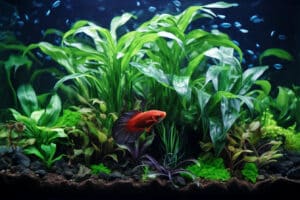
Best Anubias Plants For Betta Fish
Best Anubias Plants For Betta Fish Today, we’re diving deep into the world of Anubias
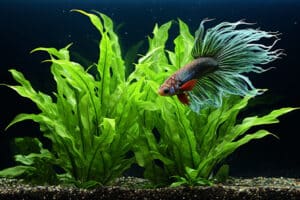
Java Fern The Green Oasis in Your Betta Fish Tank
Java Fern The Green Oasis in Your Betta Fish Tank Welcome to the green side
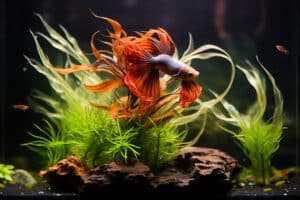
The Best Aquatic Plants For Betta Fish
Home The Best Aquatic Plants For Betta Fish Aquatic Plants for Betta Fish: Uncover the
